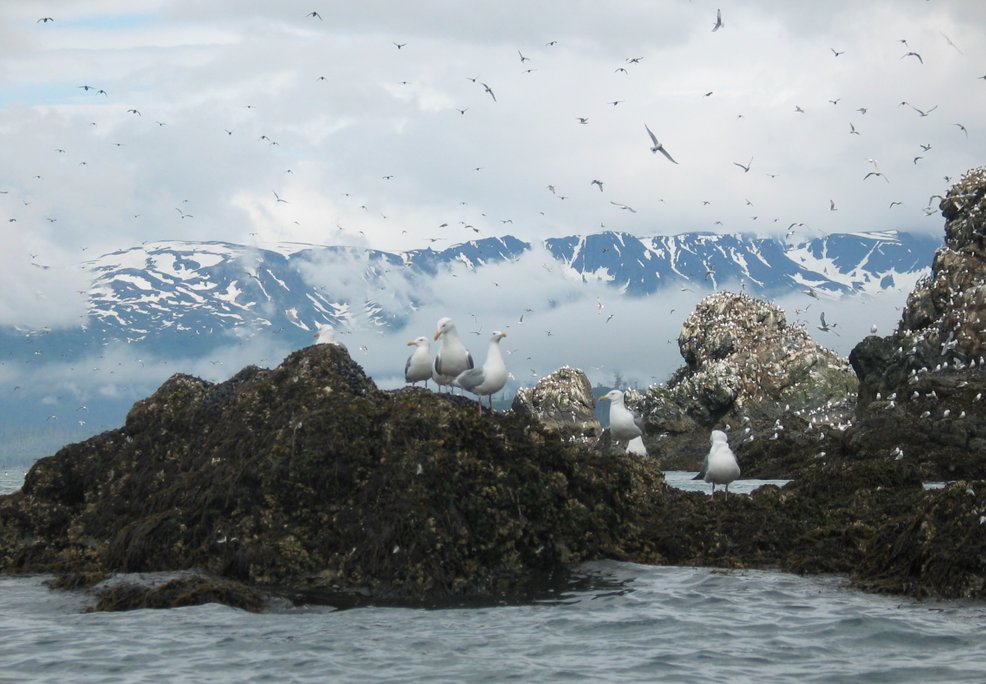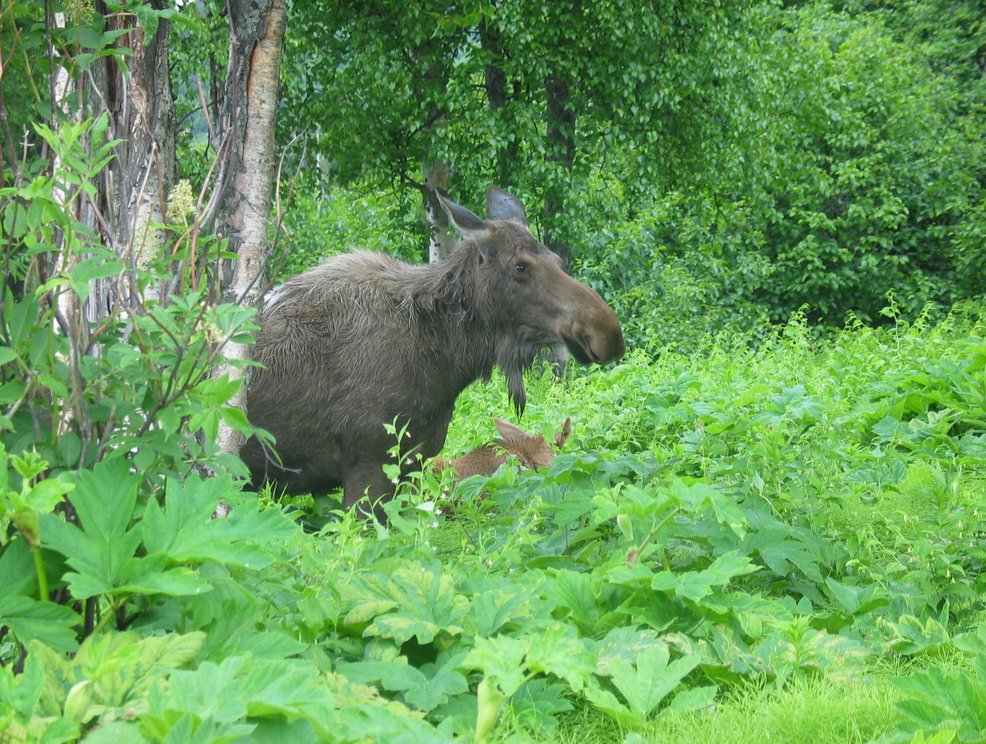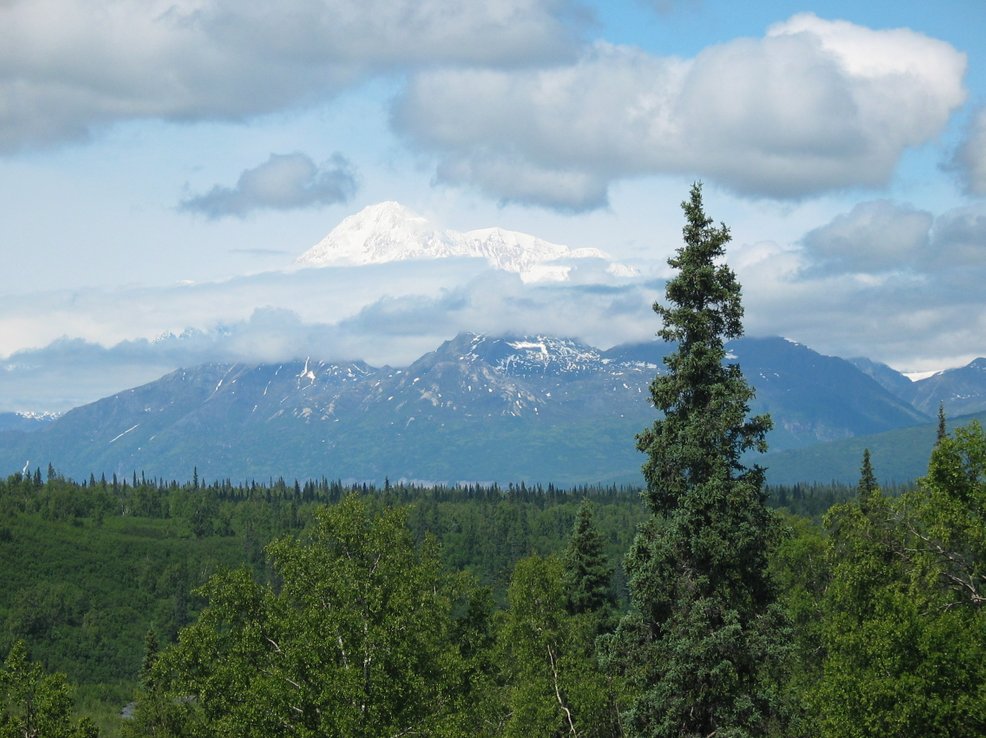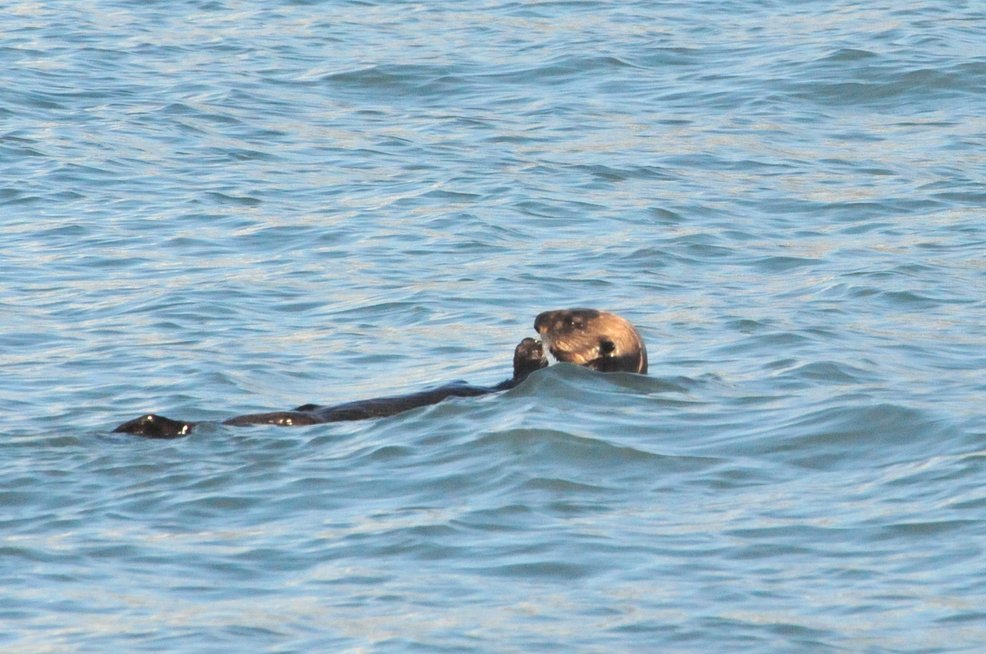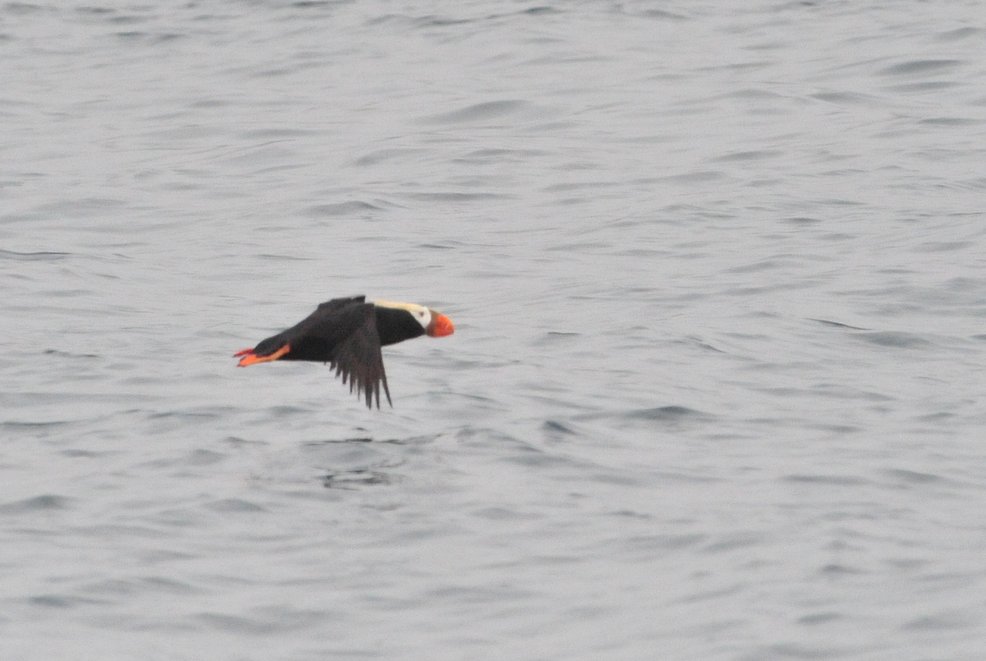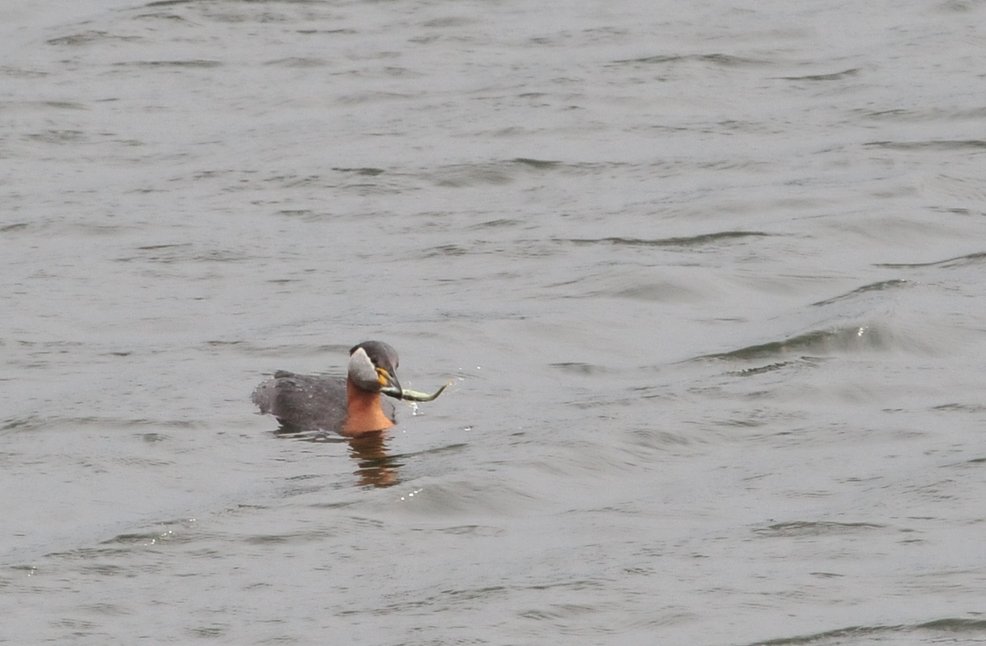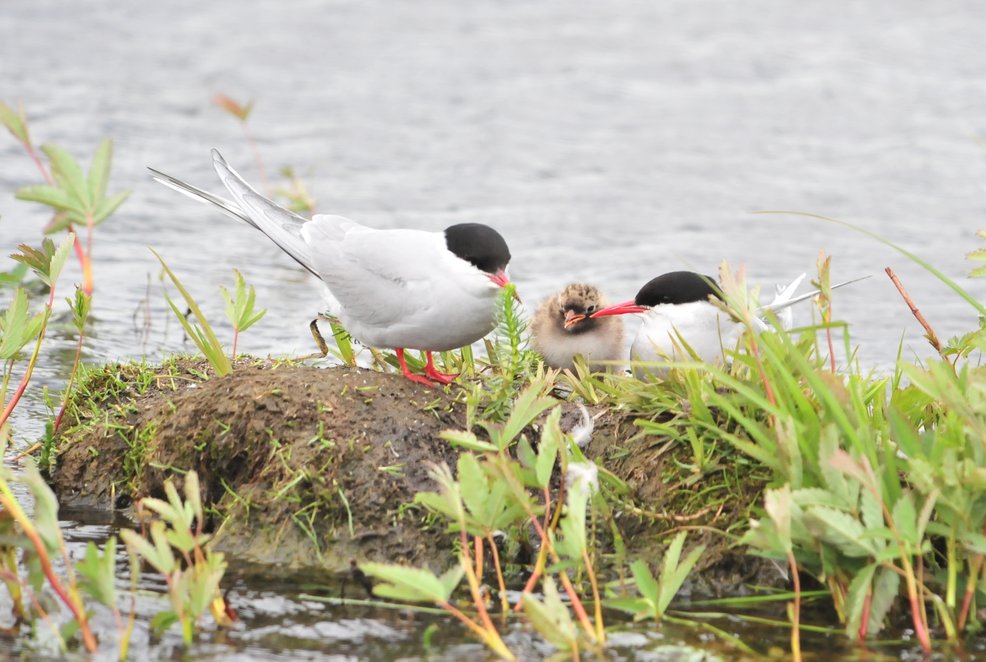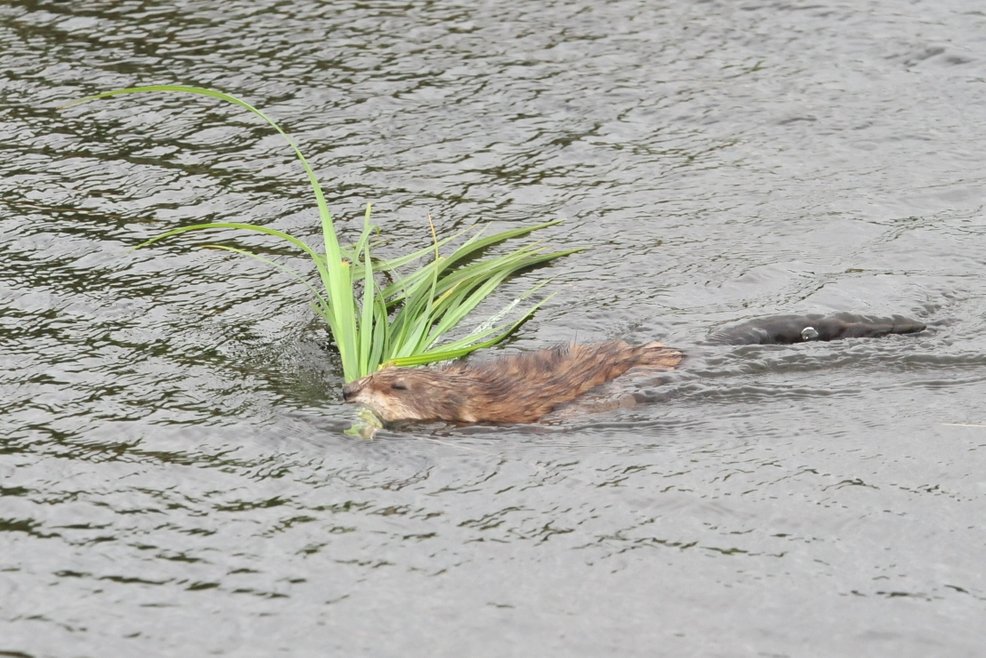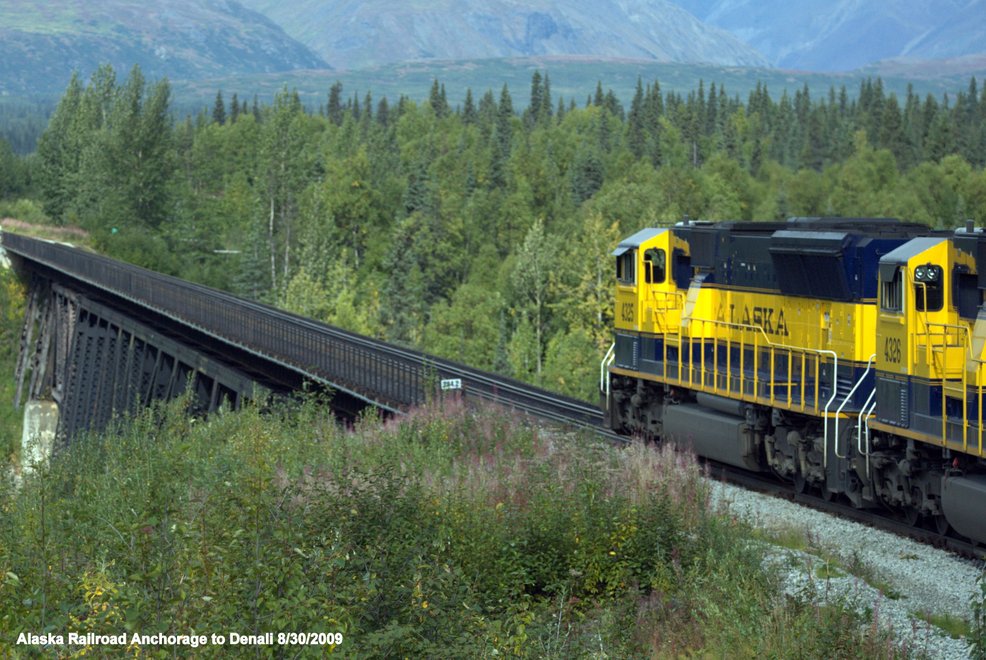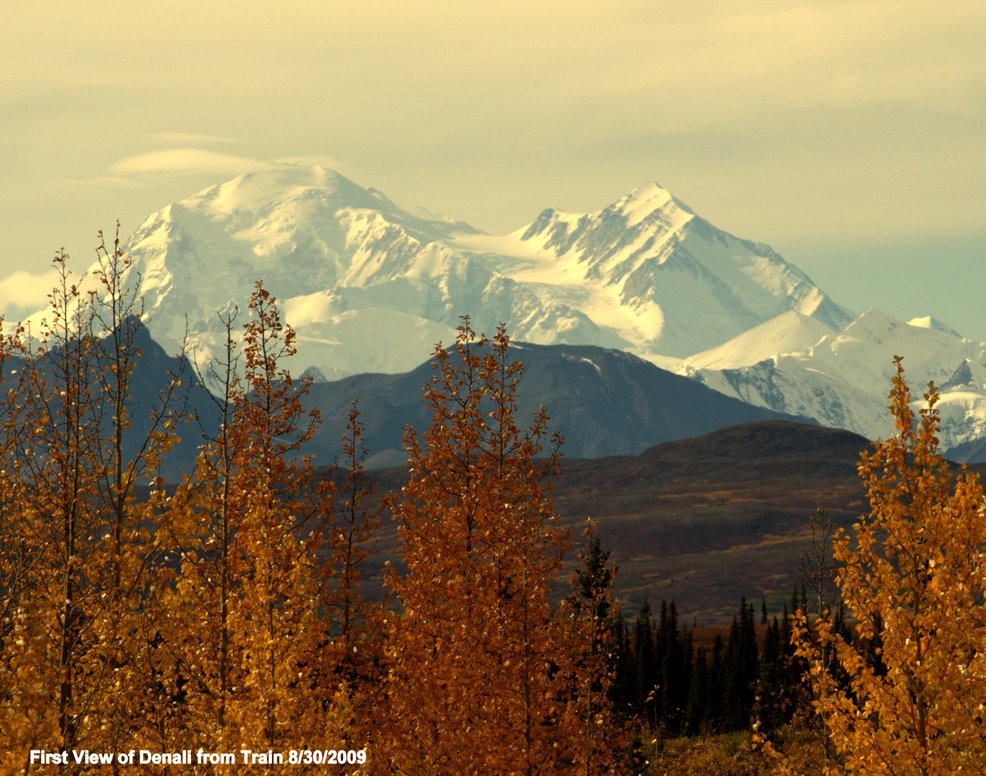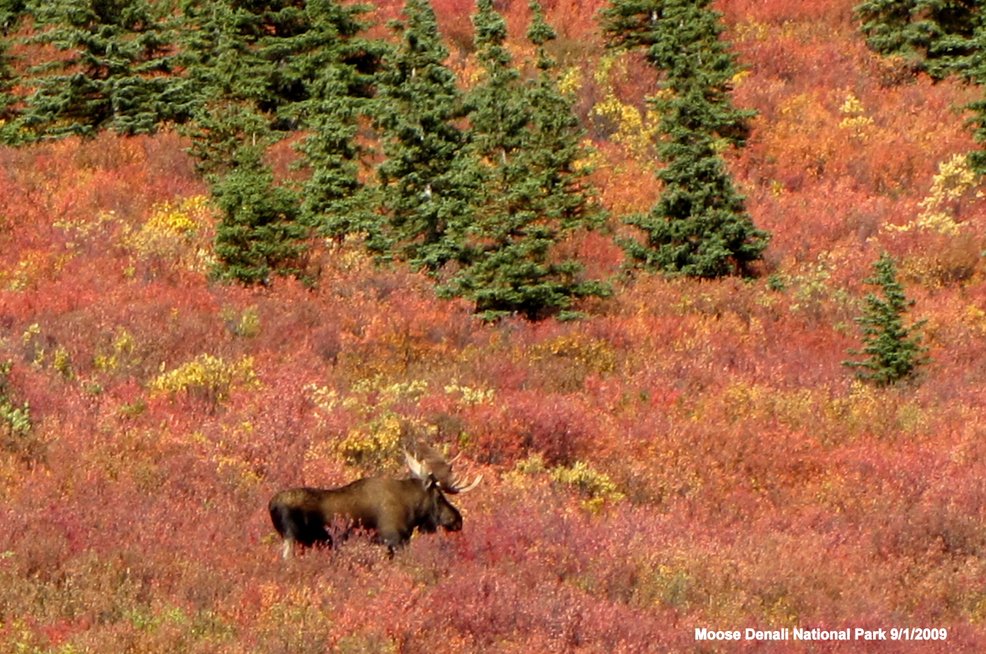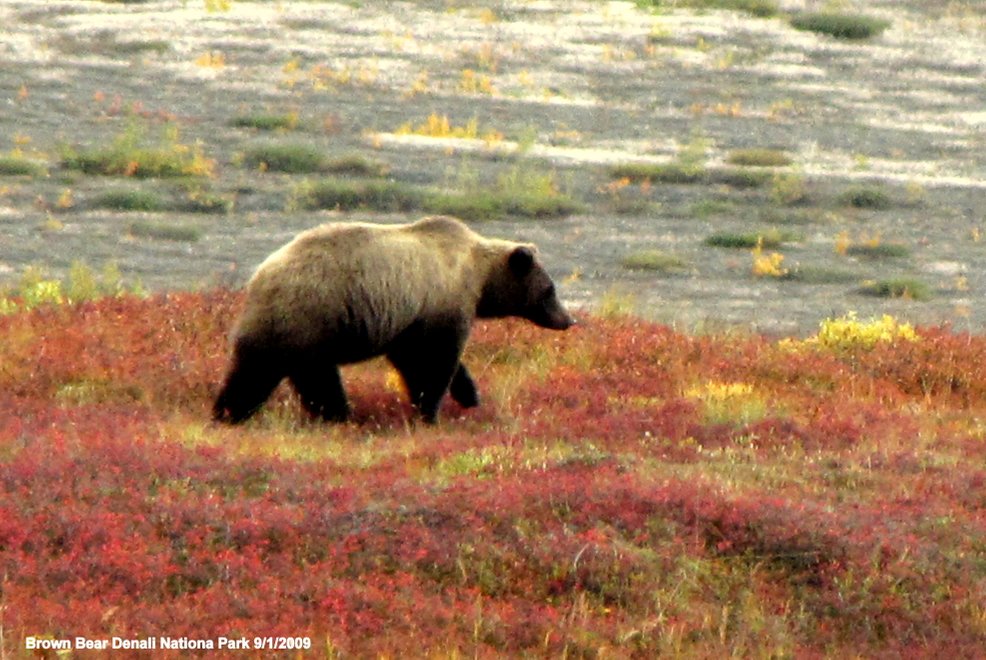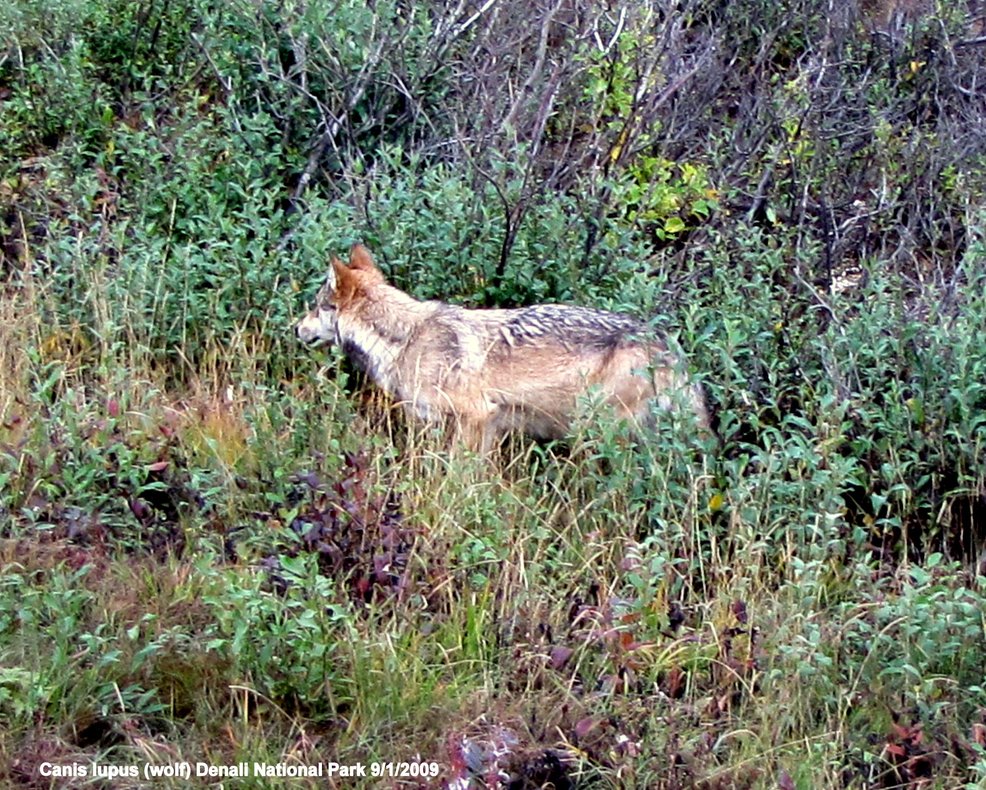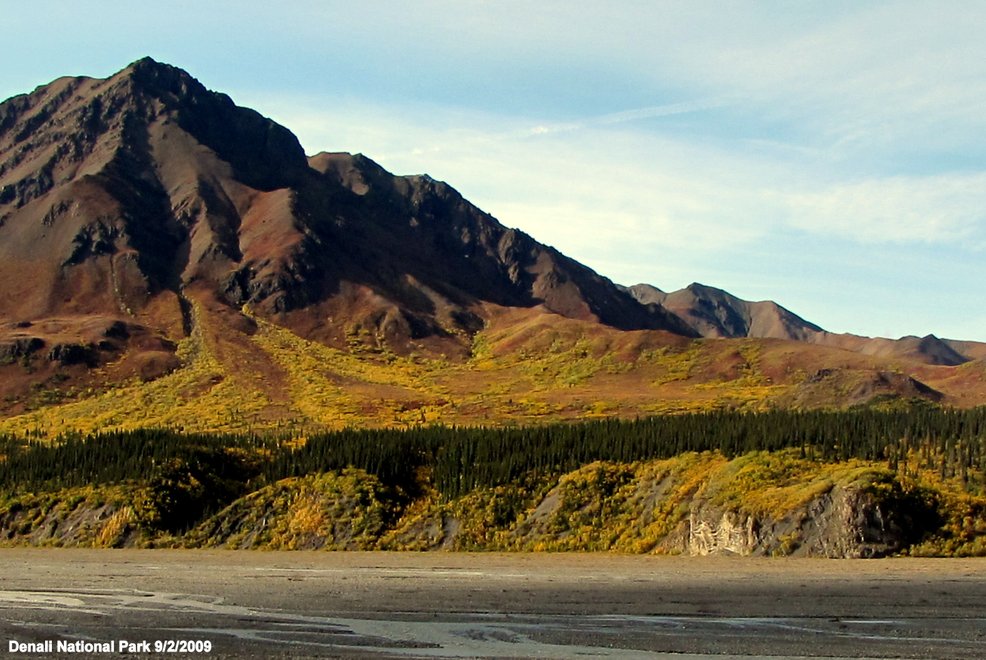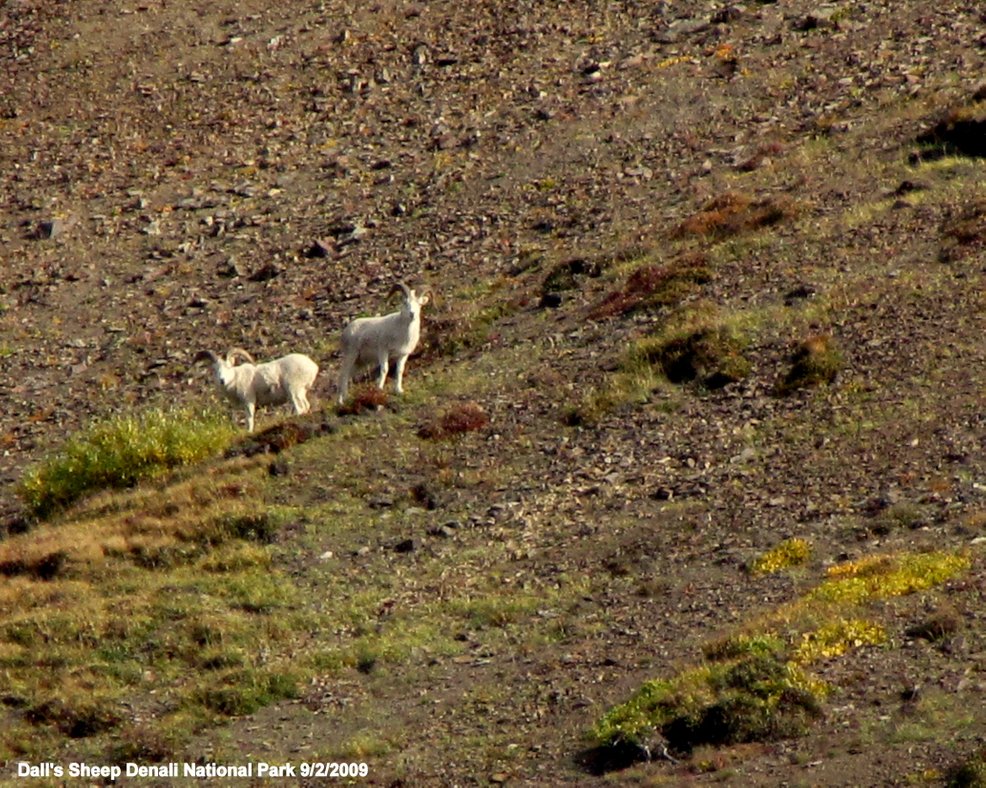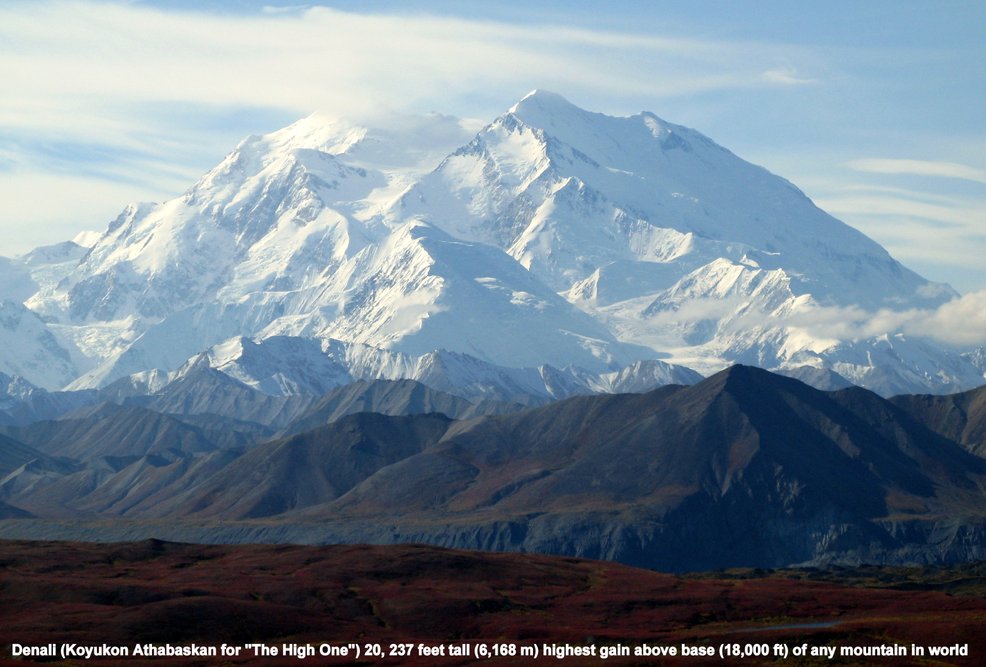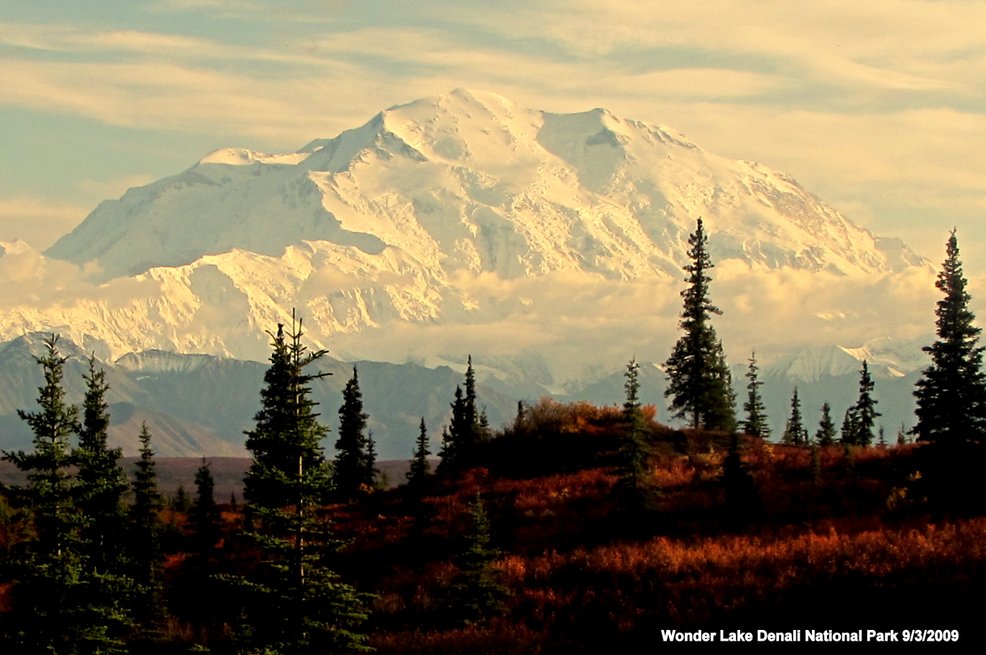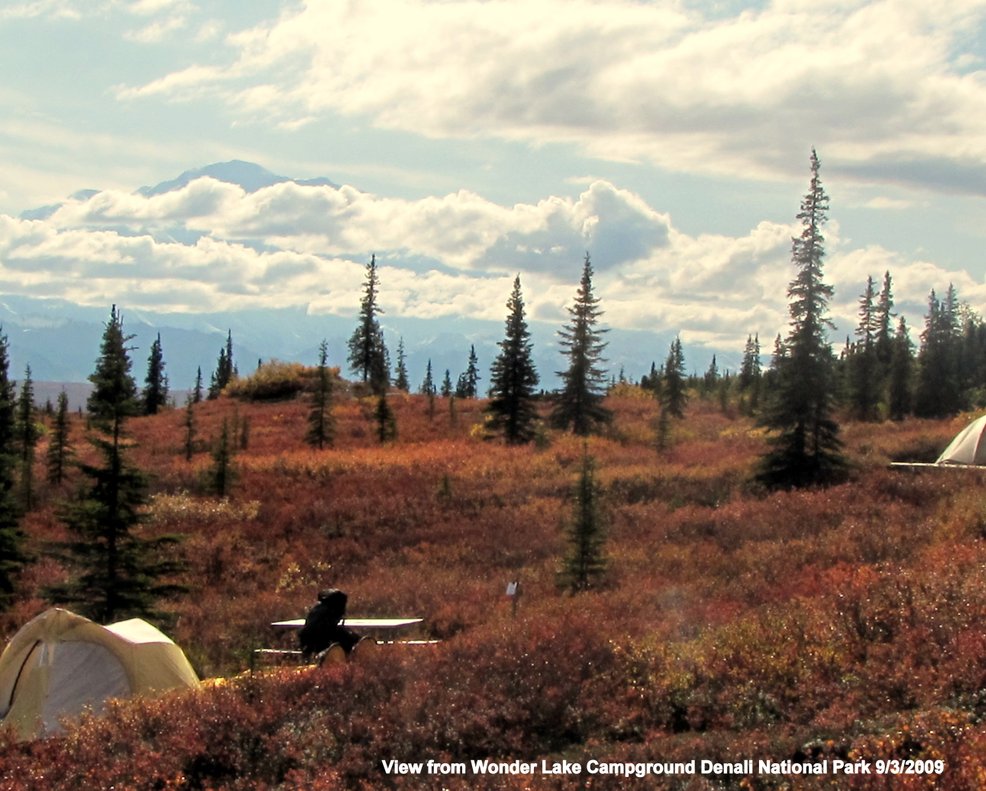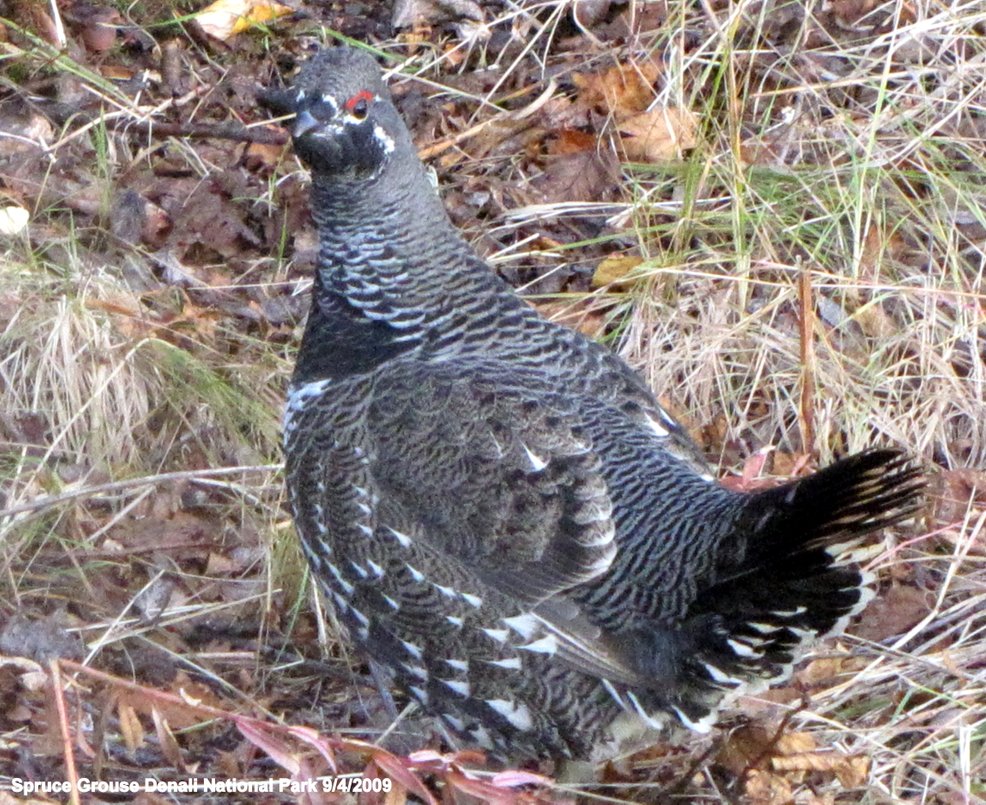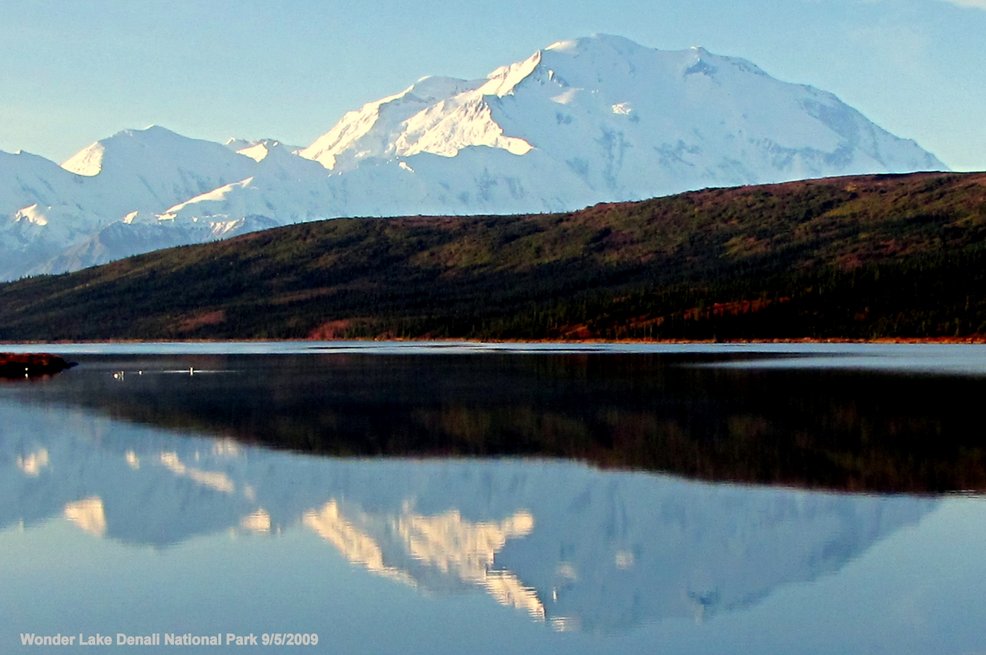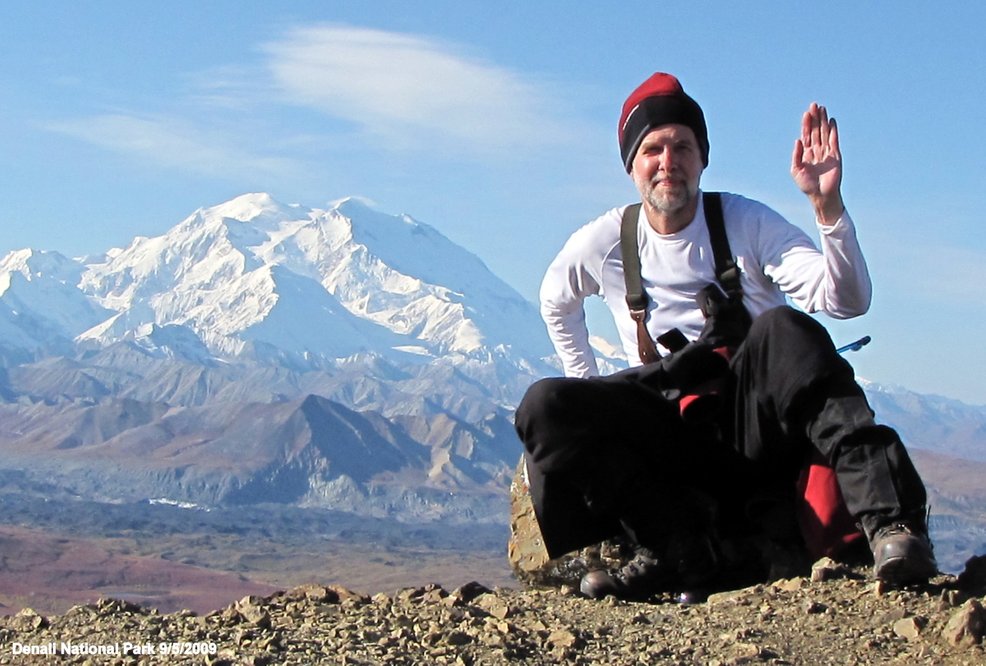Dakota Reflections
Alaska is a U.S. state on the northwest extremity of North America. A semi-exclave of the U.S., it borders British Columbia and the Yukon in Canada to the east, and it shares a western maritime border in the Bering Strait with the Russian Federation's Chukotka Autonomous Okrug. To the north are the Chukchi and Beaufort Seas of the Arctic Ocean, and the Pacific Ocean lies to the south and southwest. Alaska is the largest U.S. state by area, comprising more total area than the next three largest states of Texas, California, and Montana combined, and is the seventh-largest subnational division in the world. It is the third-least populous and most sparsely populated U.S. state, but with a population of 736,081 as of 2020, is the continent's most populous territory located mostly north of the 60th parallel, more than quadruple the combined populations of Northern Canada and Greenland. Approximately half of Alaska's residents live within the Anchorage metropolitan area.
https://en.wikipedia.org/wiki/Alaska
Alaska
Seven Trips to Alaska include the following:
- June 16- 27, 2006 Homer, Kenai Fjords National Park, Denali National Park
- June 9-12, 2009 Kenai Fjords National Park
- August 30- September 10, 2009 Denali National Park
- July 17- 22, 2010 Kenai Fjords National Park, Katmai National Park
- July 23-27, 2015 Kenai Fjords National Park, Katmai National Park
- August 10-16, 2016 Denali National Park
- August 29- September 23, 2018 Denali National Park
Gull Island
Katchemak Bay, Alaska
June 16, 2006
As many as 20,000 seabirds build nests in the craggy rock faces and cliffs of Gull Island, on the south side of Kachemak Bay about three miles from the Homer Spit. Most years, 8,000 to 10,000 black-legged kittiwakes dominate the rookery, building mud nests perched in clefts and on ledges. 5,000 to 8,000 common murres nest amid the kittiwakes. Other birds seen in smaller numbers include glaucous-winged gulls, pelagic cormorants, red-faced cormorants, puffins and pigeon guillemots.
https://adfg.alaska.gov/index.cfm?adfg=viewinglocations.gullisland
Moose
Homer, Alaska
June 18, 2006
Harbor Seals
Kenai Fjords National Park, Alaska
June 19, 2006
The harbor seal is a member of the family Phocidae or “true earless or hair seals.” Only a wrinkling or opening in the skin denotes external ears. The first sighting in the water is usually of the round head. The fore flippers are small and placed far forward with five long, clawed digits. The longer hind flippers are used for locomotion under water but cannot be turned forward as with sea lions. Harbor seals wriggle and hunch to travel on land. Because this is laborious, they will roll or slide whenever possible. The average adult found in Alaska waters is just over five feet in length and weighs about 190 pounds. Harbor seals in Atlantic waters are significantly smaller than those in Alaska or the Western Pacific, averaging five feet long and 185 pounds. Harbor seals have various haul-outs in Kenai Fjords National Park both on boulders near shore at high tide and on ice flows in front of tidewater glaciers. They are seen more often out of the water during pupping season in June and later during their fall molt, August through September. Their color varies from silver white to almost black with contrasting colored spots, rings, or blotches. In our local waters the “light” phase is more common. Pups are generally born with spotted silver coats but occasionally show a longer, softer white or gray coat (lanugo) that sheds usually within 10 days.
Harbor seals are known to have lived to over 30 years of age. The average for females in the wild is around 25-30 years. Males are usually shorter lived, partly due to the stress of fighting during the breeding season. Transient orcas and large sharks, including the salmon and sixgill, feed on harbor seals, especially pups. Diseases such as distemper, influenza, heartworm, and bacterial infections, as well as gut nematodes, take their toll on the population. In 1999, the worldwide population was estimated at around half a million. During the 1980s, numbers declined 63-85 percent in Alaska. Locally, the seals in Aialik Bay near Aialik Glacier have decreased from more than 1,600 to about 200 seals. This decline coincides with a widespread decline of sea lions, marine birds, and other marine species throughout the Gulf of Alaska. Recently, harbor seal numbers are climbing again. In the park, the numbers are at about 50 percent of the original population of the 1980s.
https://www.nps.gov/kefj/learn/nature/harbor-seal.htm
Sea Otter
Kenai Fjords National Park, Alaska
June 22, 2006
Sea otters are the largest members of the weasel family, and are related to skunks, wolverines, weasels, badgers, martens, and minks. Sea otters average four to five feet long and weigh 80 pounds, but they can be as much as six feet and 100 pounds. The sea otter lacks the blubber, and consequently size, that all other warm-blooded sea animals need to stay warm. In place of blubber, sea otters have a dense coat of luxuriously soft fur. Made up of a dark brown underfur with sparse guard hairs of lighter brown or silver color, the sea otter’s coat consists of 600,000 to 1,000,000 hairs per square inch and must be kept immaculately clean to keep the animal warm. A sea otter’s head fur turns grayish-white, almost silvery, with age, giving rise to the nickname “old man of the sea.”
https://www.nps.gov/kefj/learn/nature/sea-otter.htm
First view of Denali
Alaska Highway, Alaska
June 27, 2006
Sea Otter
Kenai Fjords National Park, Alaska
June 9, 2009
Orca
Kenai Fjords National Park
June 10, 2009
Orcas, or killer whales, are the largest member of the dolphin family, reaching a length of 23 to 26 feet and weighing four to eight tons. Seeing orcas attack large whales, eighteenth century Basque whalers called the predator “ballena assasina” meaning, “whale killer.” Orcas are predatory sea mammals belonging to the suborder Odontoceti or toothed cetacean. Orcas display a prominent dorsal fin easily seen when the animal surfaces. A mature male’s dorsal fin is roughly triangular and can extend up to six feet out of the water. Females and sub-adults have smaller, more crescent-shaped dorsal fins. Orcas have a black body and white chin, belly and patch behind the eye. They also have a gray saddle patch behind the dorsal fin. Researchers use black and white photos of the saddle patch and dorsal fin, viewed from the left side, to identify individual whales.
Orcas become sexually mature at 10 to 15 years of age. Upon maturing, the male dorsal fin begins to straighten and grow. The growth spurt distinguishes the male dorsal fin from the female. It takes about five to six years for the fin to reach its full length of up to six feet in height.
The life expectancy of killer whales is not yet certain. Using mortality rates among known populations, scientists estimate that these whales live 30 to 50 years. Several females among local resident pods in Alaska have reached over 50 years of age. It is believed some individuals, mostly female, may occasionally reach 80 to 90 years of age. Mature orcas are the top predator, while sharks may also prey upon the young. Except for hunting in the past by humans, most death is thought to be due to age, disease, and environmental toxins such as DDT and PCBs. Examination of carcasses indicates tooth wear and gum disease as well as environmental toxins are problems for the orcas in this area.
https://www.nps.gov/kefj/learn/nature/orca.htm
Orcas
Kenai Fjords National Park, Alaska
June 10, 2009
Dall's porpoise
Kenai Fjords National Park, Alaska
June 10, 2009
The Dall’s porpoise is a member of the family Phocoenidae otherwise known as “true” porpoises. Porpoise comes from a Greek word meaning, “pig faced” describing the blunt snout and stocky body form. It is named after W.H. Dall the American zoologist who wrote about and sketched two specimens taken off the coast of Alaska in 1873. The average adult is six feet in length and weighs 300 pounds. Porpoises have small, spade-shaped teeth unlike the cone-shaped teeth of dolphins and other toothed whales. They also have distinctive rigid, protruding growths between each tooth called “gum teeth” which are thought to be used in grasping slippery prey items such as squid. Often reported by visitors as “little orcas,” they are black with a bright white region on the belly and flank that extends from mid-body almost to the flukes. The dorsal fin is small and triangular, and often has a gray or white patch starting at the tip and down most of the trailing edge. Considered one of the fastest of the smaller cetaceans, they are known to reach speeds of close to 35 miles per hour, often causing a distinctive “rooster tail” of spray as the dorsal fin hits the surface. Similar to some dolphin species, they often play about ships “porpoising” and riding on the bow waves. The oldest known age is 22 years. Worldwide population is estimated to be just over one million, while the Alaska stock is estimated at 83,000. Predators include transient orcas and, less frequently, sharks.
https://www.nps.gov/kefj/learn/nature/dalls-porpoise.htm
Tufted Puffin
Kenai Fjords National Park, Alaska
June 10, 2009
Stellar Sea Lion
Kenai Fjords National Park, Alaska
June 10, 2009
Steller sea lions are the largest members of the Otariid, or “eared seal,” family. Female sea lions average seven feet in length and about 600 pounds. Male sea lions, slightly longer at nine feet, weigh more than twice as much as females at an average of 1,500 pounds with “beach masters” reaching up to 2,400 pounds. The otariids in Alaska include three animals: fur seals, California sea lions and Steller sea lions. The eared seals differ from the phocids, or “earless” seals, by having visible external ear flaps and long hind flippers that can be turned under, making travel on land easy. The Steller sea lion is called “seevitchie” by the Aleuts and “sivuch” by the Russians, each translating to “seawolf.” The name that the animal now bears comes from George Wilhelm Steller, a naturalist aboard the 1741 Vitus Bering expeditions. Steller thought the creature resembled a lion because the male’s large neck and shoulder region look similar to the mane of a lion. Steller sea lions are light tan to reddish brown in color. Males are visibly larger and appear lighter in color than females. Juveniles are chocolate brown in color and appear in early June. Pups stay dark for their first four to six months and then molt to a lighter color. Top predators include transient orcas and salmon sharks.
https://www.nps.gov/kefj/learn/nature/steller-sea-lion.htm
Black Bear
Kenai Fjords National Park, Alaska
June 10, 2009
American Bald Eagle
Seward, Alaska
June 12, 2009
Red-necked Phalarope
Potter Marsh Wildlife Refuge, Alaska
June 12, 2009
Red-necked phalarope females are larger and more brightly colored than males. The females pursue and fight over males, and will defend their mate from other females until the clutch is complete and the male begins incubation. The males perform all incubation and chick-rearing activities, while the females may attempt to find another mate. If a male loses his eggs to predation, he may re-pair with his original mate or a new female to try again. Once it becomes too late in the breeding season to start new nests, females begin their southward migration, leaving the males to incubate the eggs and look after the young.
https://en.wikipedia.org/wiki/Red-necked_phalarope
Arctic Terns
Potter Marsh Wildlife Refuge, Alaska
June 12, 2009
The Arctic tern has a circumpolar breeding distribution covering the Arctic and sub-Arctic regions of Europe (as far south as Brittany), Asia, and North America (as far south as Massachusetts). The species is strongly migratory, seeing two summers each year as it migrates along a convoluted route from its northern breeding grounds to the Antarctic coast for the southern summer and back again about six months later. Recent studies have shown average annual round-trip lengths of about 70,900 km (44,100 mi) for birds nesting in Iceland and Greenland and about 48,700 km (30,300 mi) for birds nesting in the Netherlands. These are by far the longest migrations known in the animal kingdom. The Arctic tern nests once every one to three years (depending on its mating cycle).
https://en.wikipedia.org/wiki/Arctic_tern
Beaver
Potter Marsh Wildlife Refuge, Alaska
June 12, 2009
Beavers are large, semiaquatic rodents of the Northern Hemisphere. Beavers are the second-largest living rodents after the capybaras. They have stout bodies with large heads, long chisel-like incisors, brown or gray fur, hand-like front feet, webbed back feet and flat, scaly tails. Beavers can be found in a number of freshwater habitats, such as rivers, streams, lakes and ponds. They are herbivorous, consuming tree bark, aquatic plants, grasses and sedges. Beavers build dams and lodges using tree branches, vegetation, rocks and mud; they chew down trees for building material. Dams impound water and lodges serve as shelters. Their infrastructure creates wetlands used by many other species, and because of their effect on other organisms in the ecosystem, they are considered a keystone species. Adult males and females live in monogamous pairs with their offspring. When they are old enough, the young will help their parents repair dams and lodges and may also help raise newly born offspring.
https://en.wikipedia.org/wiki/Beaver
Alaska Railroad
Denali National Park, Alaska
August 30, 2009
First full view of Denali on 2nd Trip!
Member of 30 Percent Club!
Denali National Park, Alaska
August 30, 2009
Mountain ranges throughout Alaska play a significant role in the weather and climate. When low pressure systems move northward from the Gulf of Alaska, that moist cold air hits the mountain ranges and condenses while rising upward. This results in clouds and precipitation in the mountains that often obstructs the view of Denali.
This weather pattern means the south side of the Alaska Range, also known as the windward side, receives more precipitation than many other parts of the state. As a result this area is home to large scale glaciers and ice fields. The north side of the Alaska Range, where most visitors stay in Denali National Park, is actually in the rain shadow of the Alaska Range. The weather on the northern side is much more forgiving than the southern side of the mountain, but it is still often varied and unpredictable.
Denali is clouded over on average on seven out of ten days giving visitors a 30 percent chance of seeing the summit.
Mobile Home for 1 week!
Riley Creek Campground, Denali National Park, Alaska
August 31, 2009
Moose
Denali National Park, Alaska
September 1, 2009
1800 Moose live in Denali National Park
Grizzly Bear
Denali National Park, Alaska
September 1, 2009
300 to 350 Grizzly Bears live in Denali National Park
Wolf
Denali National Park, Alaska
September 1, 2009
14 packes with 92 wolves live in Denali National Park
Grizzly Bear
Denali National Park, Alaska
September 2, 2009
Teklanika River
Denali National Park, Alaska
September 2, 2009
Dall Sheep
Denali National Park, Alaska
September 2, 2009
Protection of Dall’s sheep was the primary driving force in the creation of Mount McKinley National Park in 1917. When Charles Sheldon roamed the foothills of the Alaska Range over 100 years ago, he became concerned about the population of Alaska’s “white sheep,” wondering if it would be overexploited for food by explorers and gold seekers. Sheldon successfully lobbied Congress for a game refuge.
https://www.nps.gov/articles/denali-sheep-survey.htm
Denali
Denali National Park, Alaska
September 3, 2009
Denali from Wonder Lake Campground
Denali National Park, Alaska
September 3, 2009
Denali from Wonder Lake Campground
Denali National Park, Alaska
September 3, 2009
Wonder Lake Campground is at mile 85 on the Denali Park Road. It offers 28 tent-only sites. It is the closest campground to Denali. Though separated by nearly 26 miles, the sheer size of the mountain makes it loom impressively over Wonder Lake Campground. Cloudy skies can obscure views, and mosquitoes can be fierce, but Wonder Lake on a clear day offers views that will last a lifetime. Bear-proof food lockers are available throughout the campground.
https://www.nps.gov/dena/planyourvisit/campground-wonder.htm
Spruce Grouse
Denali National Park, Alaska
September 4, 2009
Denali and Wonder Lake
Denali National Park, Alaska
September 5, 2009
Moose
Denali National Park, Alaska
September 5, 2009
Moose
Denali National Park, Alaska
September 5, 2009
Arctic Ground Squirrel
Denali National Park, Alaska
September 5, 2009
Denali from the Eielson Visitor Center trail
Denali National Park, Alaska
September 5, 2009

